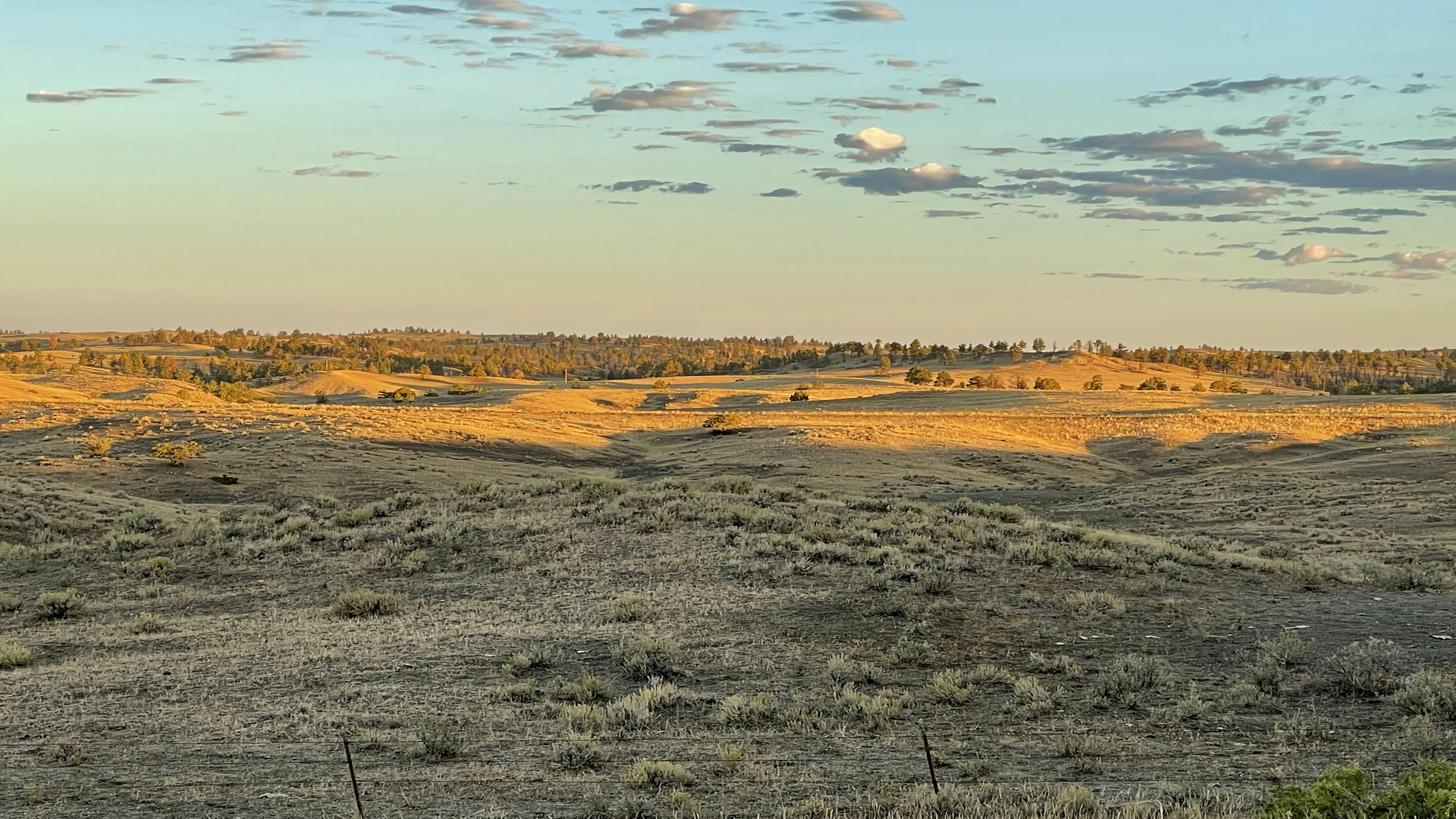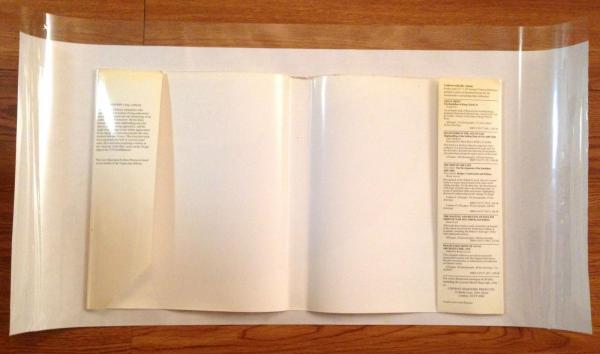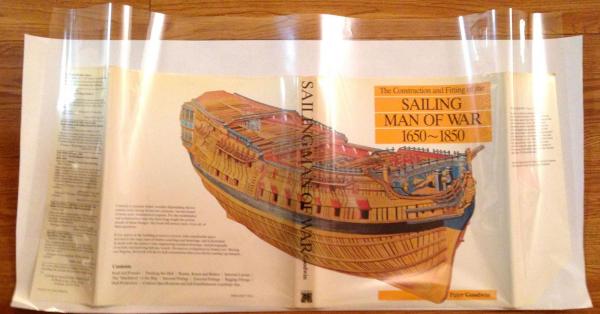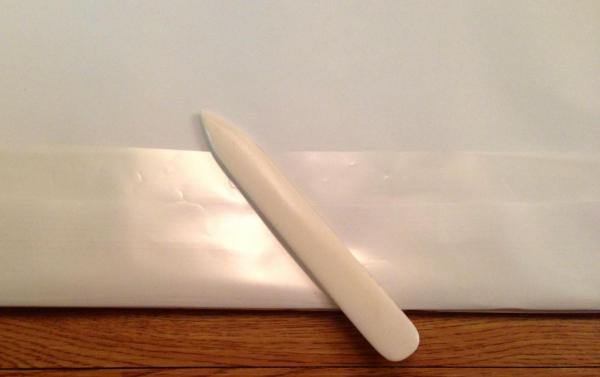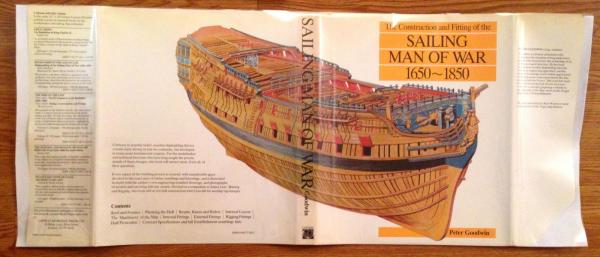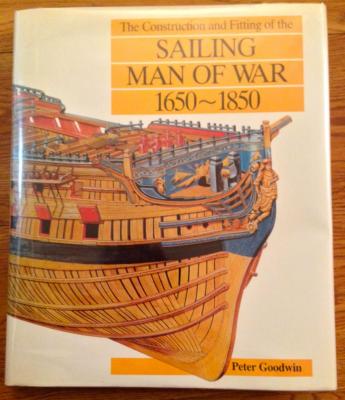-
Posts
654 -
Joined
-
Last visited
Content Type
Profiles
Forums
Gallery
Events
Everything posted by Jay 1
-
She's looking like a gem, Tim and her fine lines are really starting to show! Cheers, Jay
-
Great work Robbyn--a very fine looking longboat! Looking forward to your Syren! Oh, btw if you purchase a half face respirator, be sure to get organic filters and use them in the mask otherwise you're not protected from the vapors of most chemicals we work with. Jay
- 234 replies
-
- 18th century longboat
- model shipways
-
(and 1 more)
Tagged with:
-
Michael, just caught up with your build; your work is as beautiful as ever--fantastic metal metal work! Jay
- 2,207 replies
-
Thanks, Gary! Was thinking about admirals and what they may know or may not know about one's book spending when I wrote that paragraph...harmony and full disclosure don't always go hand-in-hand... Maybe put full disclosure down on paper somewhere safe and just occasionally drop mention that your books will be worth a bit in the future! Jay
-
Richard, she's looking really nice--well done on your planking! Jay
- 162 replies
-
How often do we spend a handsome sum on either a great new or out-of-print second-hand shipbuilding book? I’m sure many of us have a nice collection of shipbuilding references on our shelves; however, how many of us know about protecting our book’s dust jackets (often called dust wrappers in the UK and elsewhere)? You may be asking, “Why would I want to go to the bother and expense of putting a cover over my book dust jackets?” It’s a good and fair question to ask! Good Mylar covers, with archival paper inserts, are wonderful for protecting your book’s dust jackets when they are either on or off your books or when you're taking your books off or putting them back onto your book shelves. In addition to protecting your book dust jackets, the condition of a book’s dust jacket has a direct bearing on a book’s resale value, which is known to most book dealers but not most folks—this is something I learned along the way as a long-time collector (and reader) of literary first editions. If your dust jackets are covered, you can count on getting better prices from book dealers if you choose to sell your books. I won’t go into the ins and outs of book or dust jacket grading, but the protection does help add to or maintain a collectible book’s value. Because model shipbuilding is a relatively small, niche market good books often go out-of-print. If you’re serious into obtaining a good shipbuilding reference library, you’ve probably learned that many of the classic, must have books, are out-of-print. Likewise, some current, excellent in-print references will also likely go out-of-print in time. In either case, these out-of-print classics are often difficult to find and are expensive. Therefore, Mylar covers are excellent choices for protecting your investment. Additionally, in most cases, our books will long outlive us. Thus protecting these classic work’s dust jackets is one way to ensure that these classics are in good condition when they are passed on to future hands. Lastly, in my opinion, a book just simply looks good when it's protected with a Mylar cover! Before I go on further, I want to mention here that it’s also a very good idea to document someplace in your personal papers which books of yours are valuable. Why? It’s so that your next-of-kin can know the value of your collection and hopefully not give your references away or sell them for a song because they think these obscure books aren’t worth much (for example, if you have Sim Comfort’s edition of Steel’s Naval Architecture…do you really want it going onto eBay for $1.00?). Back to Mylar covers: these are relatively inexpensive. Although you can buy specific cover sizes to fit your books, it’s much more economical to buy Mylar covering by the roll (Amazon). I also suggest you get a large size because you can always fold larger sizes down to fit smaller dust jackets. While they’re not essential, I also recommend purchasing a “bone knife” (Amazon). These are used for creasing a cover’s folds and make that task much easier. The knife doesn’t actually have to be made from bone—it just has to be able to slide easily along a cover and create a good, sharp fold or make a new fold if you’ve made an error with sizing the cover over a dust jacket. As you can see in the photos I’ve included, putting Mylar covers over dust jackets is straightforward if you’ve never used them before. However, there is one caveat. Jackets often will tend to move away from the bottom of a cover at the cover’s outer right and left ends. To deal with this, fold over, but don’t yet crease down the fold, at either a cover's right or left side. Then push the jacket back down to seat it at the bottom of the cover on that side (lift the bottom cover edge up on that side to make sure the jacket is seated) and then make about a 2” (~5cm) crease with a bone knife along the temporary fold you've made on that side of the cover. Then weight down that side of the cover with a book to hold the dust jacket and partially creased cover in place. Then seat the dust jacket on the other side. You can now crease the entire edge of the fold. If you didn’t quite get it right, just redo it—with a bone knife, re-doing creases is generally easy and the new creases will generally come out well. Note: When covering dust jackets, it's usually done with the cover facing down and in between the Mylar and the archival paper like you see in the 3rd photo below. You can see here how the right and left edges of a dust jacket tend to not seat against the bottom of a cover: Here's what a bone knife looks like: The dust jacket is now fully seated in the cover: The finished cover: Cheers, Jay
-
Your chain plates sound like they were a pain and health hazard! Hope you're feeling better mi amiga! An alternative to kit wire is black annealed steel wire made by Hilman; it comes in a variety of gauges, is inexpensive (about $4 for a 50' coil), and generally silver solders well. While I don't often use it, 5 minute epoxy is great for jobs that really need to hold--not sure if the smell will also cause a reaction for you Robbyn but it's worth a try given your experiences with CA. Jay
- 234 replies
-
- 18th century longboat
- model shipways
-
(and 1 more)
Tagged with:
-
Tony, thanks for sharing--everything really looks great! Well done! Jay
- 269 replies
-
- Caldercraft
- First build
-
(and 3 more)
Tagged with:
-

3D Printing - Not Just Yet!
Jay 1 replied to dvm27's topic in CAD and 3D Modelling/Drafting Plans with Software
To add to Druxey's excellent suggestions, I'd include wearing a half-face respirator w/ organic filters when working with acetone, particularly if the ventilation is a fan or etc. along with being very aware, and wary, of acetone's very low flash point! Jay -
Thanks, Dan--glad I could lend a hand! Jay
-
You're welcome, Jud--yep, the gun was before my time too! While weapons themselves weren't what we focused on when I was in EOD, we knew and understood them well enough to be general menaces to GMs/GMGs, AOs, and mortar/artillery crews--lol. The ordnance, explosives, and etc. were really our bailiwick. Yep, smaller bore guns usually fired fixed ammo though in the early days it wasn't uncommon for large field artillery pieces to use fixed ammo too (some of the brass cases from World War 1 are amazing to see--saw some stunning examples in France a few years back). It's been a few moons since I researched an older weapons system, and it was nice to see a few of the key unclass pubs on the web and share them! Jay
-
Hi Dan, Based on my 20+ years of experience as an US Explosive Ordnance Disposal technician, I'd say it's a World War 1 through 1940s era Navy 4" / 50. The gun was used on a variety of vessels during that period (guns as opposed to artillery, generally have more elongated rifling and thus fire flatter trajectories and were used on both shore and ships, to include submarine deck guns). Although a weapons system may be date stamped, that stamp does not limit the system to being used strictly during that time frame--that's why I gave a wide time span above. Here's a link to Wikipedia that has some info. on 4" / 50s: http://en.wikipedia.org/wiki/4%22/50_caliber_gun And here's a NAVWEPS link: http://www.navweaps.com/Weapons/WNUS_4-50_mk9_pics.htm Here's the cross ref from the MK XII Mod 1 carriage to the gun: Historic Naval Ships Visitors Guide - Gun Mount and Turret Catalog.pdf If the scout does some digging on the shells used in the gun (he'll need to find out the MK numbers and, as applicable, the Mod number(s) used in the piece; general info. won't be as easy to cross reference / research), he can likely find out detailed specifics on shells (the correct term is "projectiles," our slang term in EOD was "projo," which my spell check hates ) in the projo chapter (Ch. 1, 4" projos) of OP 1664: http://www.hnsa.org/doc/ordnance/index.htm As an afterthought, here's the detailed info. on 4" / 50s from NAVWEPS: http://www.navweaps.com/Weapons/WNUS_4-50_mk9.htm Cheers, Jay
-
Perfect Robbyn--glad I could lend a hand!
- 234 replies
-
- 18th century longboat
- model shipways
-
(and 1 more)
Tagged with:
-
Chris, my copy arrived last night and you're spot on, and I'm in total agreement with you--it's a phenomenal work to say the least! Needless to say, I didn't get to bed until way late last night! And if your wife did get you Frolich, mmmm buddy you're in for a treat--it's a stunningly excellent work (that one that has also kept me up into the wee hours)! As a supplement to Frolich's book, here's a link to his website: http://modelisme.arsenal.free.fr/artdumodelisme/indexgb.html Cheers, Jay
-
Robbyn, things are looking great! About the gaff: Run your halyard through the top hole and then down to the pin. Imagine a pulley wheel is in-between the top and bottom holes: if you run the line through the bottom hole, it will, or could, jam the pulley wheel from turning plus mess up the leverage; therefore, you don't want to run your line back through the bottom hole. While I don't have a pic. of a sheave to post for you, here's a good approximation for the visual: Hope that helps! Jay
- 234 replies
-
- 18th century longboat
- model shipways
-
(and 1 more)
Tagged with:
-
Sam, those are looking really nice--well done! Jay
-
Robbyn, your metal work is looking great, along with the build--very nice! Don't blame you for dry docking your SFII for a while--not only the parts issues but the kit in general sounds...like time for a break. After my AL build, I knew I'd never do another one of their kits because of the issues I encountered--many were similar to yours. Guess that was part of the learning process, too! Jay
- 234 replies
-
- 18th century longboat
- model shipways
-
(and 1 more)
Tagged with:
-
Stelios, thank you so much for posting a photo of the pliers you use! Using those type of pliers makes great sense--now I fully understand your technique! I will try those on the next straps I make, as it looks much easier than making jigs or etc., and the pliers should give the perfect crimp. I also use a paste similar to what you're using, and you're right, it's very easy to use! Sam, if you need a source for it, let me know and I'll post the supplier's info. It's a little expensive, but it goes a long way and works great! Like Stelios, I got my info from Russ' excellent tutorial! Cheers, Jay
-
Robbyn if you're planning on upgrading your Syren blocks, maybe it has enough dbl blocks that are the right size for your SFII (here's link for the conversions http://mdmetric.com/tech/cvtcht.htm )? Jay
- 773 replies
-
- san francisco ii
- artesania latina
-
(and 1 more)
Tagged with:
-
Sam, thanks for the photo--it does look like the round nose pliers did a nice job! Jay
About us
Modelshipworld - Advancing Ship Modeling through Research
SSL Secured
Your security is important for us so this Website is SSL-Secured
NRG Mailing Address
Nautical Research Guild
237 South Lincoln Street
Westmont IL, 60559-1917
Model Ship World ® and the MSW logo are Registered Trademarks, and belong to the Nautical Research Guild (United States Patent and Trademark Office: No. 6,929,264 & No. 6,929,274, registered Dec. 20, 2022)
Helpful Links
About the NRG
If you enjoy building ship models that are historically accurate as well as beautiful, then The Nautical Research Guild (NRG) is just right for you.
The Guild is a non-profit educational organization whose mission is to “Advance Ship Modeling Through Research”. We provide support to our members in their efforts to raise the quality of their model ships.
The Nautical Research Guild has published our world-renowned quarterly magazine, The Nautical Research Journal, since 1955. The pages of the Journal are full of articles by accomplished ship modelers who show you how they create those exquisite details on their models, and by maritime historians who show you the correct details to build. The Journal is available in both print and digital editions. Go to the NRG web site (www.thenrg.org) to download a complimentary digital copy of the Journal. The NRG also publishes plan sets, books and compilations of back issues of the Journal and the former Ships in Scale and Model Ship Builder magazines.

